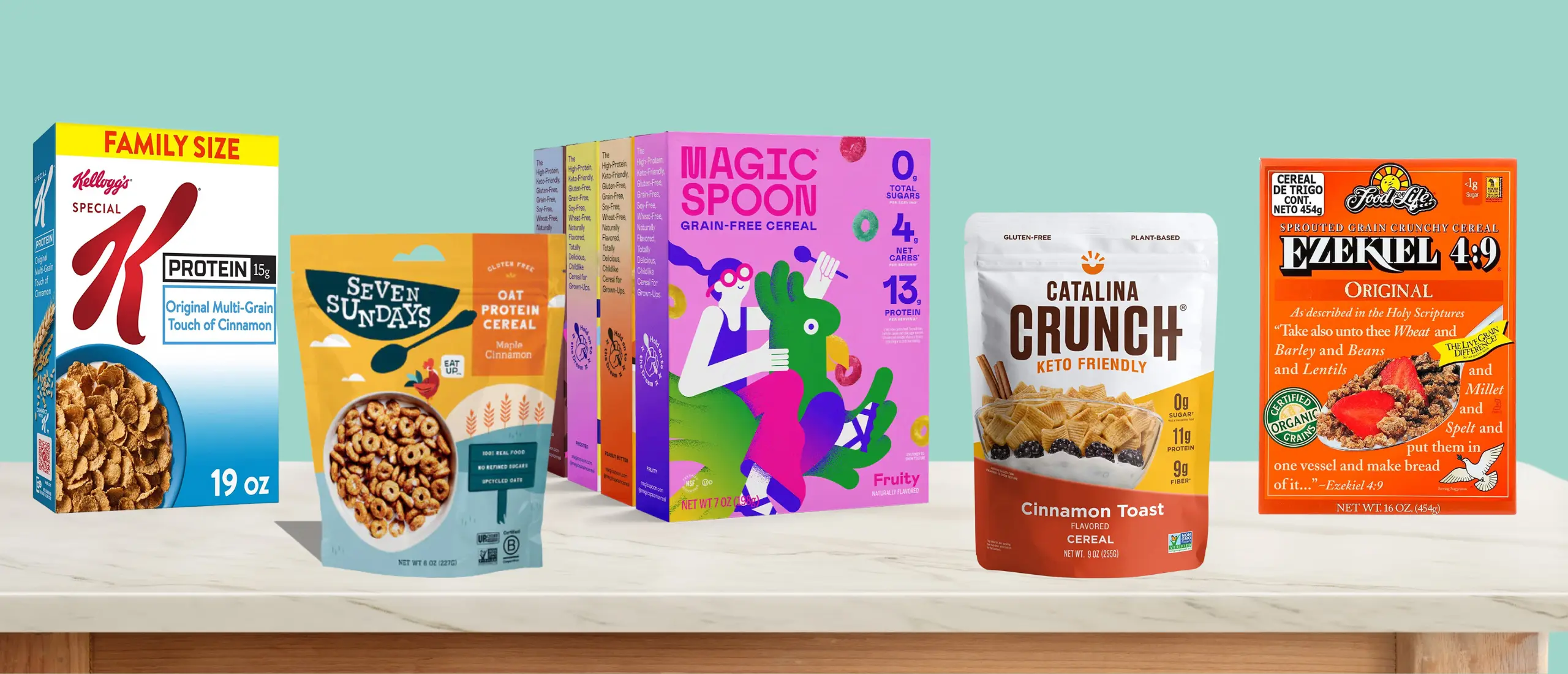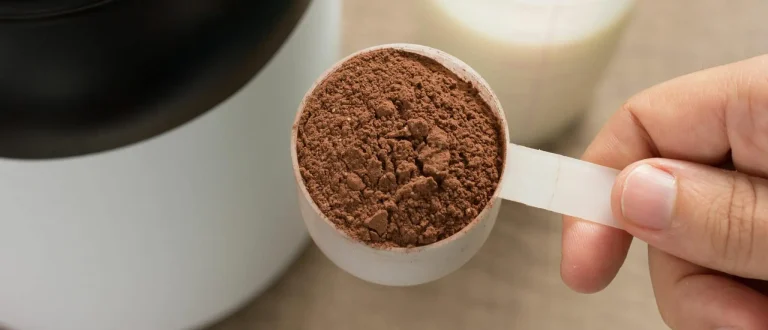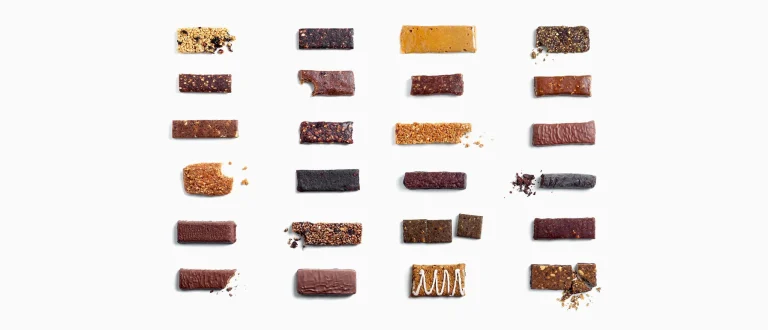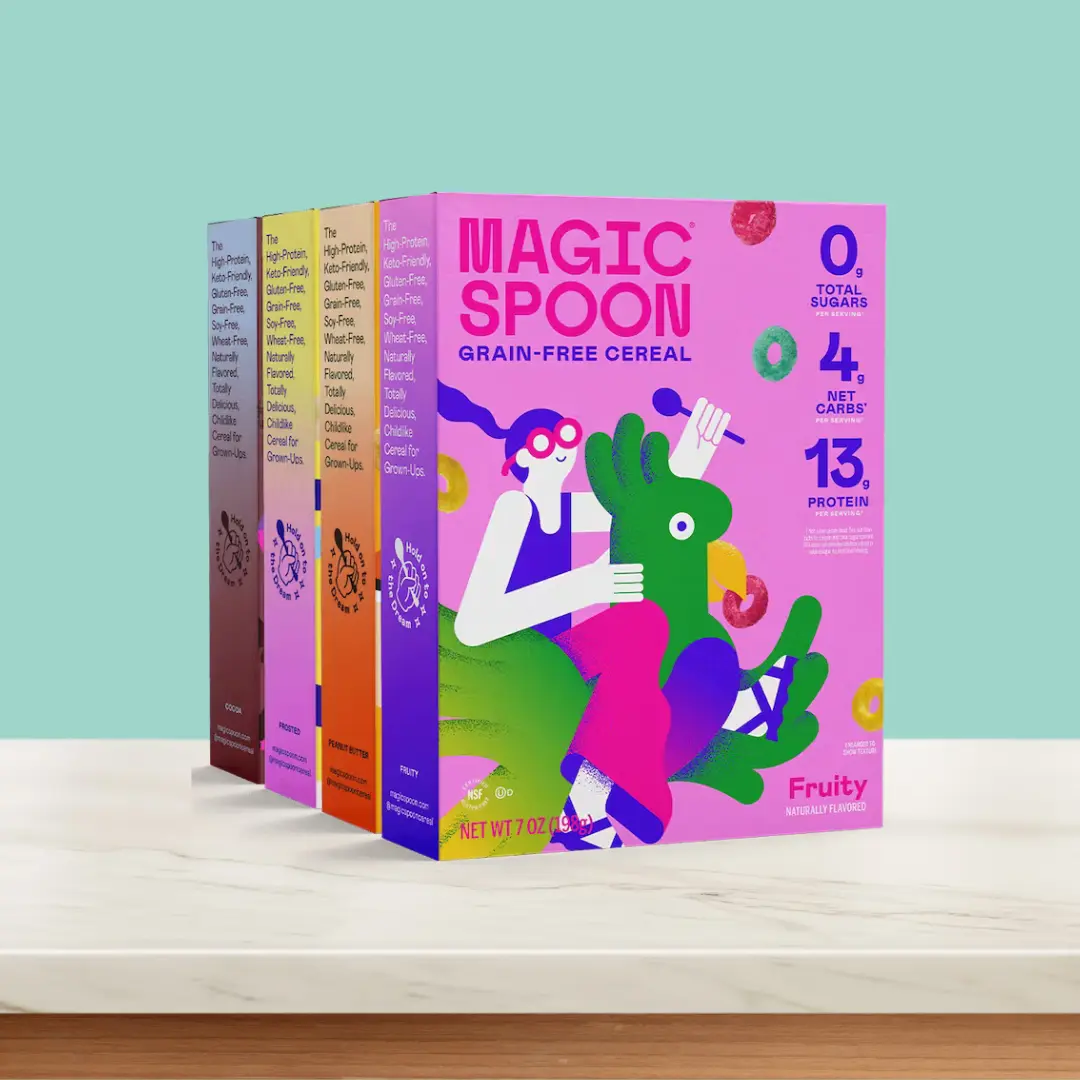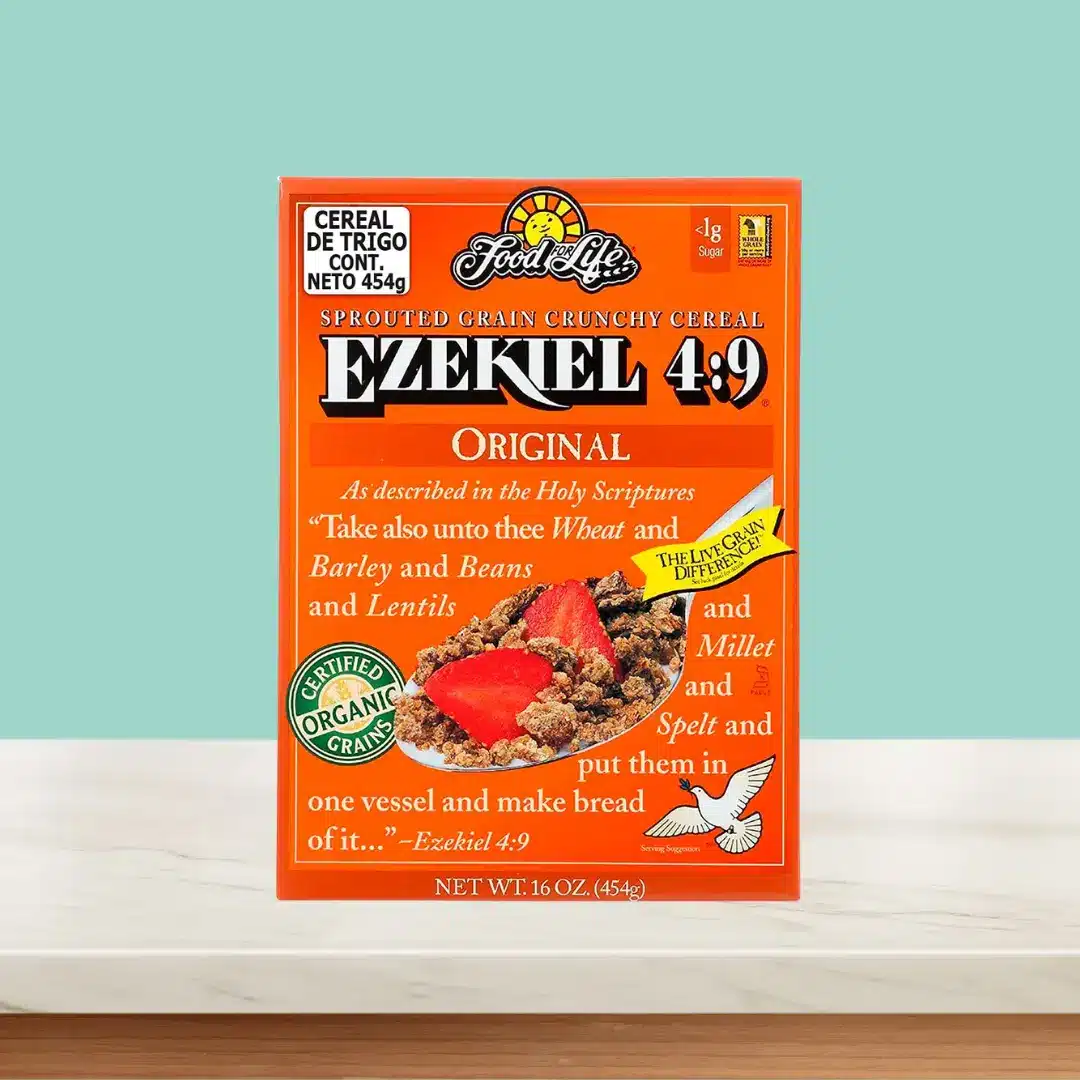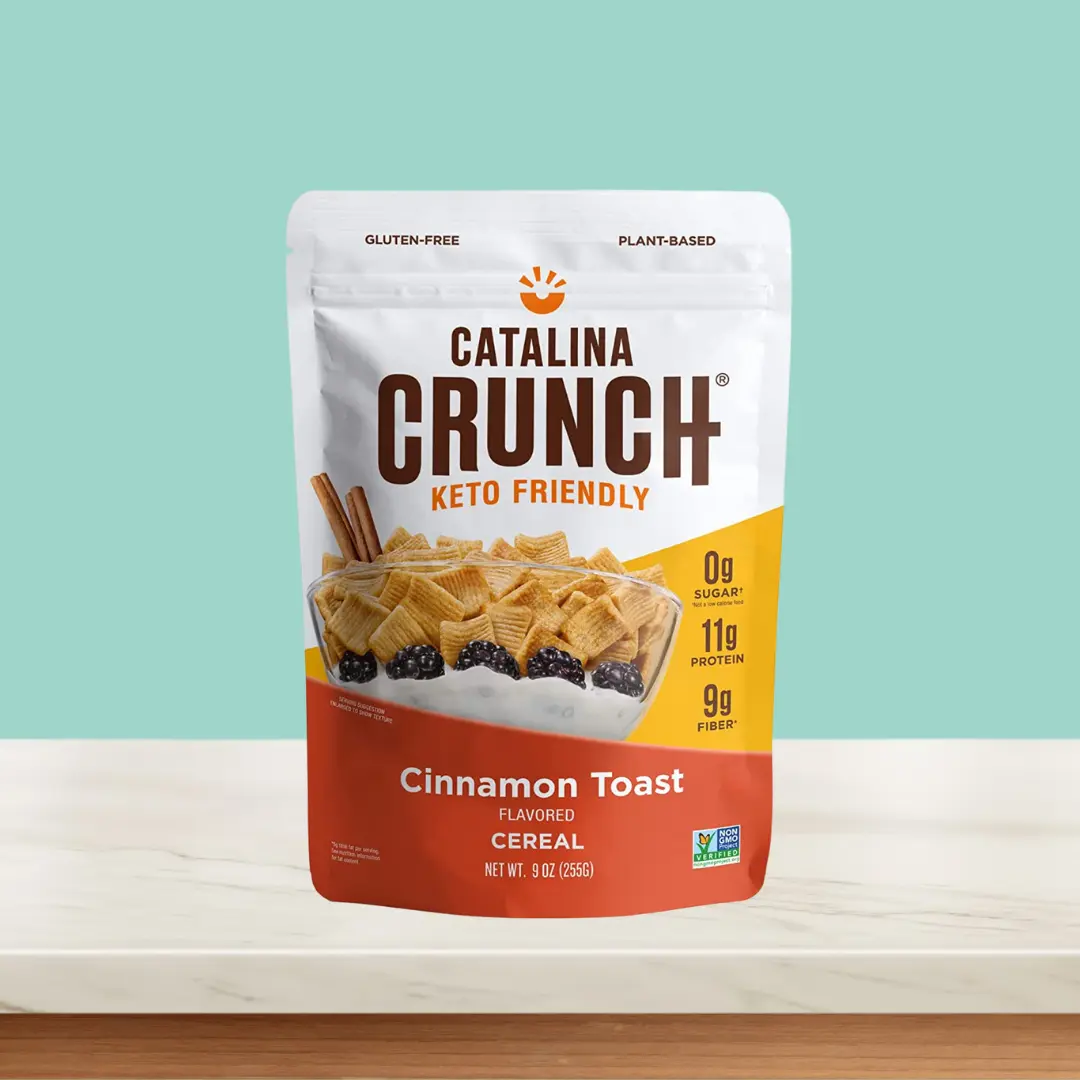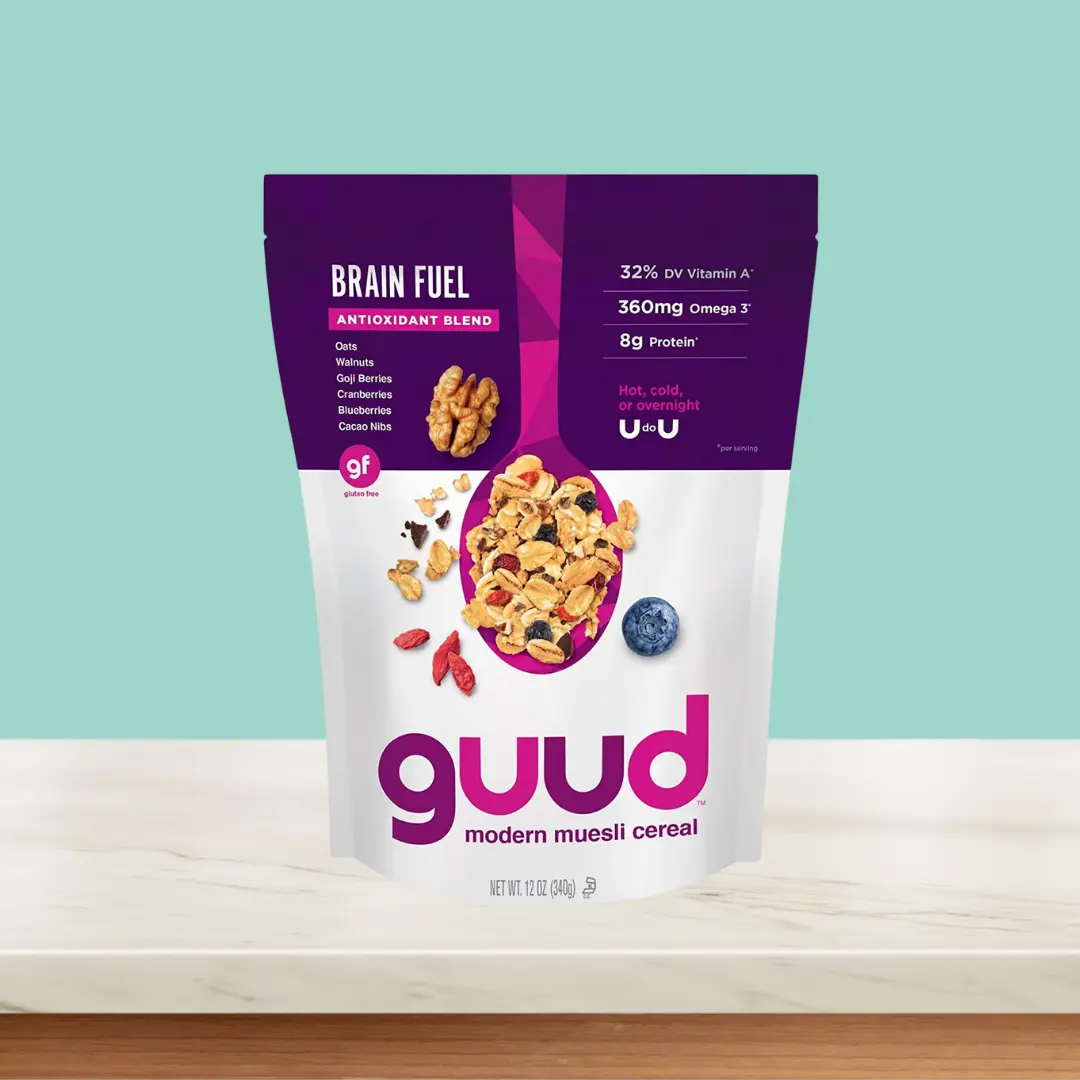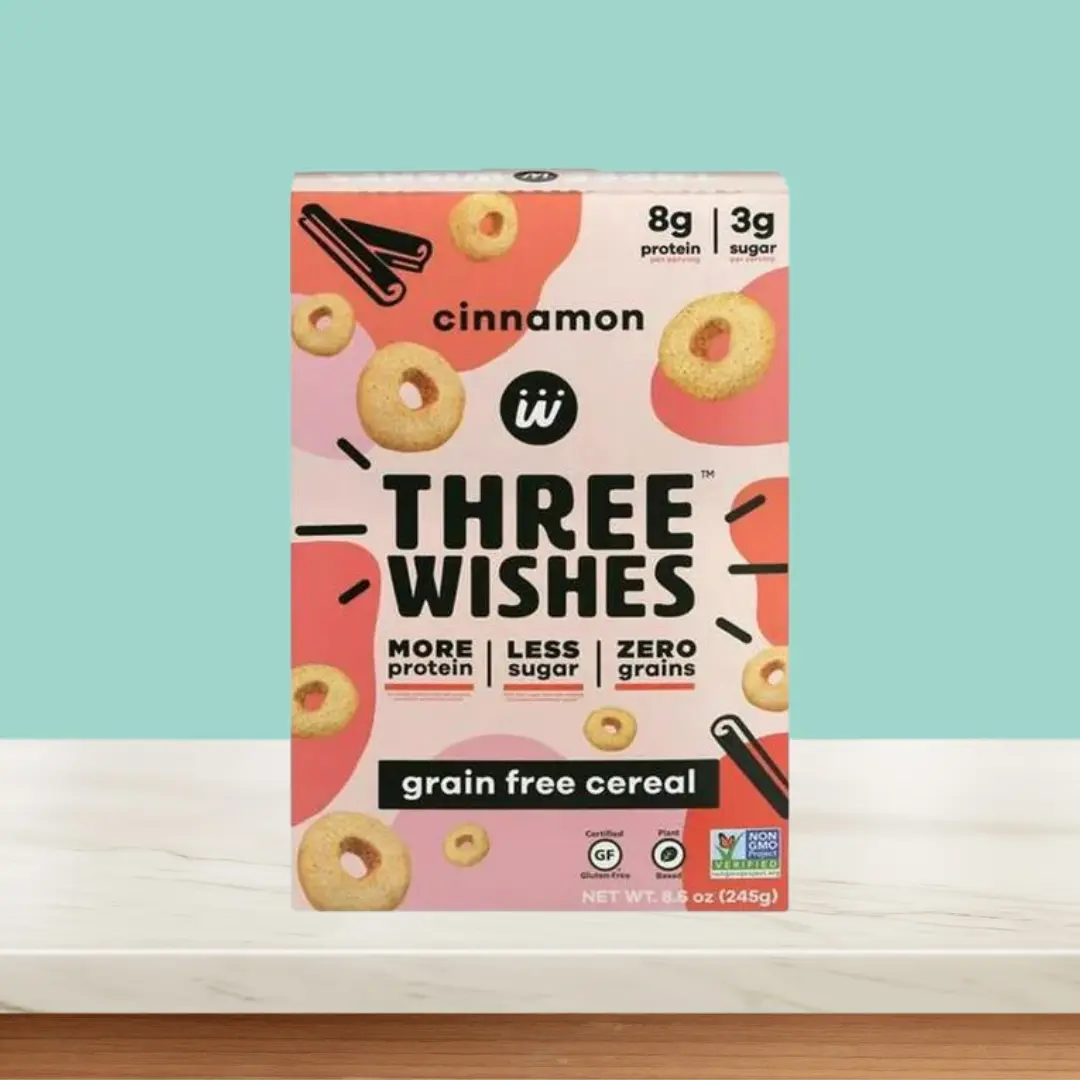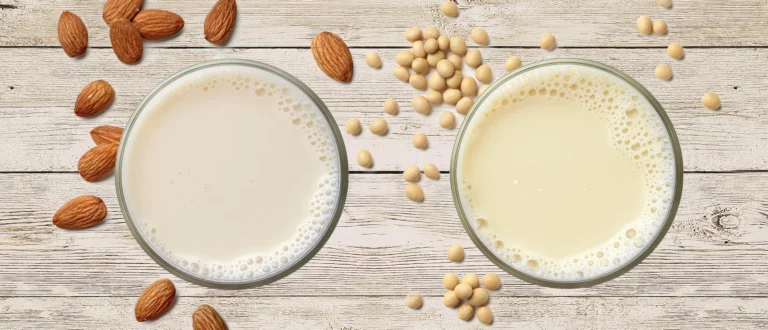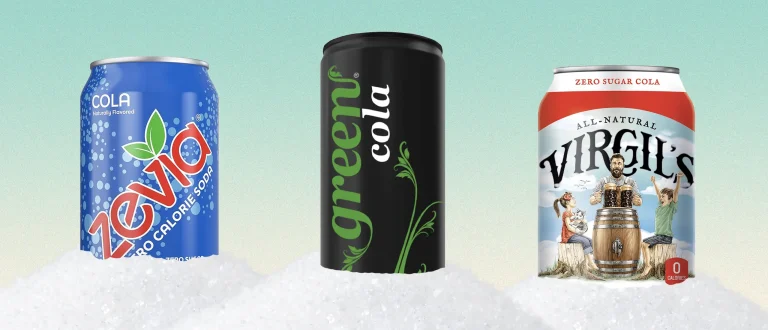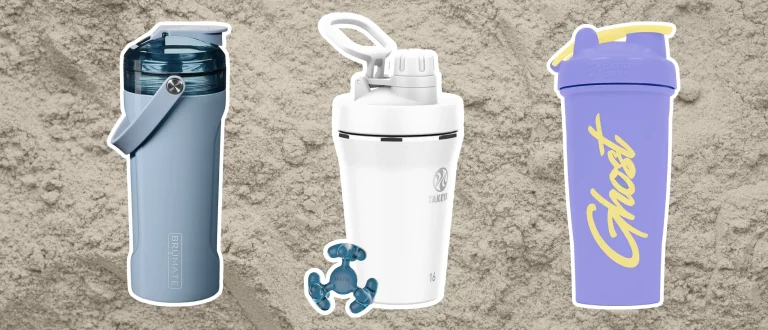Our product recommendations are selected by editors, tested first-hand, or expert-approved. We may earn a commission through links on our site.
Breakfast might be the most important meal of the day, but if Fruit Loops are on the menu it’s worth a skip. The truth is, most cereal is just dessert masquerading as breakfast. The average bowl of Cap’n Crunch packs 17 grams of sugar and only two grams of protein—meaning it might taste good, but it’s a recipe for a big blood sugar spike (and subsequent energy crash) and won’t keep you satisfied for long. Not all cereal is the enemy, however.
Protein cereal offers more protein (duh) and delivers your favorite childhood flavors with way less sugar. The addition of protein provides a more balanced macronutrient profile, which helps keep blood sugar levels steady, says registered dietitian Jessica Levinson, MS, RDN, CDN. “Choosing a high-protein cereal will also help balance your protein intake throughout the day,” she adds. Our bodies can only process about 20 to 25 grams of protein in one sitting, according to a review published in the Journal of the International Society of Sports Nutrition (1). In other words, prioritizing protein early in the day ensures that you’re getting enough.
Benefits of High-Protein Cereal
Aside from satisfying your cereal cravings, there are plenty of science-backed benefits to packing down more protein. Studies show eating more protein can help:
- Maintain and increase muscle mass (2)
- Boost bone health (3) and reduce the risk of osteoporosis (4)
- Reduce appetite and hunger levels (5)
- Reduce cravings and late-night snacking (5)
- Boost metabolism and burn more fat (6)
- Reduce blood pressure (7)
- Lower LDL (bad) cholesterol (8)
- Maintain and lose weight (9, 6)
- Recover faster (10)
MORE PROTEIN
Is High-Protein Cereal Healthy?
Not necessarily. Just like regular cereal, some protein cereals are healthier than others. “Protein cereal can be healthy, especially if it’s made with whole grains and is low in added sugars,” says Levinson. “But many high-protein cereals are made from highly processed forms of protein, which aren’t as ideal as naturally protein-rich foods like nuts and seeds.”
When shopping for a healthy protein cereal, Levinson looks for cereals with at least three grams of fiber per serving (but the more the better). She also sets the cap at seven grams of sugar. Why? Even with the protein to balance out a blood sugar spike, the American Heart Association recommends men consume no more than 38 grams of sugar per day (11).
Added sugar is found in abundance in cereals from Cookie Crisp to Honey Nut Cheerios (say it ain’t so). Sugar stokes inflammation, which is linked to everything from erectile dysfunction to heart disease (12). Added sugar, in particular, is a major contributor to obesity (13). High sugar intake has been linked to anxiety and depression (14). Plus, excessive amounts of sugar can increase cellular aging, making you functionally older (15).
The Best High-Protein Cereals
Ready to upgrade? Here are the best protein cereals that pass Levinson’s test.
Magic Spoon Grain-Free Cereal
For a high-protein version of your childhood favorites, Magic Spoon’s got the goods. Each nostalgic flavor, like Fruity, Frosted, Cocoa, and Peanut Butter, is packed with 13 to 14 grams of protein—setting them apart from your classic Fruit Loops (2 grams) and Cocoa Puffs (1 gram). “The protein comes from milk protein—a blend of whey protein concentrate and casein that contains all nine essential amino acids,” says Levinson. She also loves that each serving contains zero grams of sugar, getting its sweetness from monk fruit and allulose—two natural sweeteners that won’t spike your blood sugar like the average high-carb, high-sugar box of cereal.
Per Serving: 13 to 14 grams protein, 4 grams net carbs, 1 to 2 grams fiber, 0 grams sugar
Ezekiel 4:9 Sprouted Grain Crunchy Cereal
You’ve likely heard of Ezekiel Bread—dubbed the healthiest bread by longevity expert Dan Buettner. And while we’re always here for some nutrient-dense avocado toast, Ezekiel’s cereal wins in the convenience department. It’s just as healthy, too. “It’s made with ingredients that are naturally rich in protein like sprouted whole grains and lentils,” says Levinson. And it’s about as squeaky clean as it gets with no added or artificial sugars.
Per serving: 8 grams protein, 5 grams net carbs, 9 grams fiber, 0 grams sugar
Catalina Crunch
If you’re looking for a higher protein option with no added sugar, we give you Catalina Crunch, a keto-friendly cereal that comes in ten fun flavors from Cinnamon Toast to Dark Chocolate to Maple Waffles. “It’s made with pea protein, which makes it an especially good option for people with dairy intolerances or allergies,” says Levinson. Plus, it lives up to its name, with a seriously crunchy texture that can be hard to find in high-protein cereals. Our only qualm: Stevia. Reviewers claim it’s “the right amount of sweetness” but if you have a low tolerance for Stevia’s hypersweet taste, you might want to steer clear.
Per serving: 11 grams protein, 29 grams net carbs, 6 grams fiber, 1 gram sugar
Guud Modern Muesli Cereal
Most cereals rely on a blend of various ingredients processed into a clump—a delicious clump, yes, but processed nonetheless. Nutrient-dense muesli, however, depends on whole ingredients like nuts and seeds to deliver on crunch. Will it scratch the nostalgic cereal itch? Probably not. But if you’re simply after a healthier cereal swap, muesli is worth considering. We love Guud’s Modern Muesli Cereal. The brand offers several blends including Athlete Fuel which is designed to support an active lifestyle, but we prefer their Brain Fuel option. It’s packed with antioxidants that come from oats, walnuts, goji berries, cranberries, blueberries, and cacao nibs. Plus, it contains 360mg of omega-3 fatty acids and a respectable 8 grams of protein per serving.
Per Serving: 8 grams protein, 33 grams net carbs, 6 grams fiber, 5 grams sugar
HEALTHY SWAPS
Seven Sundays Oat Protein Cereal
If you like the taste (and high-fiber profile) of oats then Seven Sundays new Oat Protein Cereal deserve a spot in your rotation. According to one reviewer the Maple Cinnamon flavor is reminiscent of cinnamon graham crackers. It’s decent on the protein content, coming in at 5 grams of protein per serving, scoring it a few more grams of protein and less sugar than the classic (but surprisingly terrible for you) Cinnamon Toast Crunch.
Per serving: 5 grams protein, 21 grams net carbs, 3 grams fiber, 6 grams sugar
Three Wishes Grain-Free Cereal
“I like that Unsweetened Three Wishes has a short, simple ingredient list—with only four ingredients and no added sugars or sugar substitutes,” says Levinson. The brand skips gluten and grains, using chickpeas to achieve its crunchy texture. Each box leans on plant-based pea protein to deliver 8 grams of protein per serving. The flavored versions like Marshmallow, Horchata, and Chocolate Covered Strawberry use a few other ingredients like organic cane sugar, monk fruit, fruit juice, or cinnamon for a hint of flavor. Consider it the perfect grown-up cereal (that tastes good enough for kids).
Per Serving: 8 grams protein, 17 grams net carbs, 3 grams fiber, 3 grams sugar
Special K Protein Cereal
Here’s the thing, protein cereal isn’t the cheapest. Special K’s Protein Cereal, however, might be the most affordable option—with a price tag on par with traditional cereals. It also boasts an impressive 15 grams of protein per serving, which comes from soy protein isolate. And if you’re already a fan of Special K Red Berries, the Berries flavor is on par. The downside: “Unfortunately, it has the most sugar of all of the cereals listed,” says Levinson. Raking in 8 grams of sugar per serving, it comes in just over Levinson’s 7 grams of sugar rule-of-thumb.
Per Serving: 15 grams protein, 34 grams net carbs, 5 grams fiber, 8 grams sugar
Ratio Keto Granola
We all know granola isn’t as healthy as it claims, but it tastes so good we sometimes turn a blind eye. With Ratio Keto Granola you don’t have to sacrifice your integrity. Ratio features only 2 grams of net carbs and 1 gram of sugar per serving, making it keto-friendly. It also packs 8 grams of protein per serving using a soy protein isolate blend, whey protein isolate, seeds, and almonds. Try the Toasted Almond or Coconut Almond flavors dry, with milk, or with a healthy yogurt to boost the protein.
Per Serving: 8 grams protein, 2 grams net carbs, 2 grams fiber, 1 gram sugar
Premier Protein Cereal
At 20 grams of protein per one-cup serving, you can’t beat Premier Protein if protein content is your main concern in a cereal. If you’re plant-based, you’ll appreciate that this cereal is made with a combo of soy protein isolate and wheat protein isolate. We wouldn’t recommend the Chocolate Almond—it gives cardboard vibes. The Mixed Berry Almond, however, is delightful loaded up with fresh fruit and milk.
Per Serving: 20 grams protein, 12 grams net carbs, 2 grams fiber, 5 grams sugar
- How Much Protein Can the Body Use in a Single Meal for Muscle-Building? Implications For Daily Protein Distribution.
- Dietary Protein and Muscle Mass: Translating Science to Application and Health Benefit.
- Optimizing Dietary Protein for Lifelong Bone Health.
- Effect of Dietary Protein on Bone Loss in Elderly Men and Women: The Framingham Osteoporosis Study.
- The Effects of Consuming Frequent, Higher Protein Meals on Appetite and Satiety During Weight Loss in Overweight/Obese Men.
- Clinical Evidence and Mechanisms of High-Protein Diet-Induced Weight Loss.
- Dietary Protein and Blood Pressure: A Systematic Review.
- Effects of Protein, Monounsaturated Fat, and Carbohydrate Intake on Blood Pressure and Serum Lipids.
- The Role of Protein in Weight Loss and Maintenance.
- Effects of Protein Supplementation on Performance and Recovery in Resistance and Endurance Training.
- Animal Protein versus Plant Protein in Supporting Lean Mass and Muscle Strength: A Systematic Review and Meta-Analysis of Randomized Controlled Trials.
- How Much Sugar Is Too Much?
- Excessive Intake of Sugar: An Accomplice of Inflammation.
- The Dose Makes the Poison: Sugar and Obesity in the United States—A Review.
- The Impact of Sugar and Consumption on Stress Driven, Emotional, and Addictive Behaviors.
- Impact of Nutrition on Telomere Health: Systematic Review of Observational Cohort Studies and Randomized Clinical Trials.

